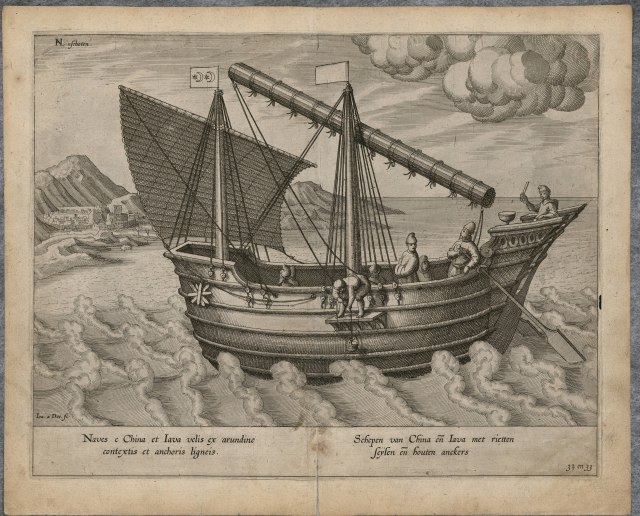
N̂g Eng-ka Medium: ngengka.medium.com Vocus: https://vocus.cc/user/@ngengka
Bogda Khan, Kaitaizu, Junker Ship
According to the ancestral genealogy, the founder of my mother's family crossed the sea to Taiwan in February of the 26th year of Emperor Kangxi of the Qing Dynasty (Ding Mao) (there are also records of people born earlier in the same generation from other branches. , but the year can no longer be tested), at this time, the fifteenth year of Wanli in the Ming Dynasty, which historian Huang Renyu considered to be a key turning point in East Asian history, was exactly one hundred years, and more than forty years had passed since 1644, when the Manchus entered the customs.
Five years ago, the Manchu Empire had just quelled the rebellion launched by the three Han vassal kings. Emperor Kangxi organized the nomads of Inner Asia and Northeast Asia in the name of Bogda Khan (Mongolian: Great Holy Khan). Clan warriors, like his father Shunzhi Emperor and his uncle and Shuo Rui Prince Dorgon, once again led the Manchu-Mongolian steppe military alliance to reconquer the eighteen provinces of the southern Han.
Three years ago, the Manchu Empire adopted a strategy similar to that of the Ottoman Turkish Empire to recruit Venetian shipbuilding technicians and Mediterranean armed maritime groups to build a navy and achieved great success. They spent at least 20 years, constantly instigating the technical and military backbone of the East Asian armed maritime business groups, such as the general Aisin Gioro. Boluo once recruited Zheng Zhilong and his huge fleet capable of fighting against Westerners, as well as countless skilled sailors, not to mention that the naval commander-in-chief Shi Lang, who was responsible for attacking Taiwan later, was from the Zheng Group. The Manchu Empire established a powerful navy to overcome the shortcomings of the Manchu and Mongolian military aristocrats who were not good at naval warfare, and finally crossed the sea to conquer the Zheng's armed maritime business group, which was the former trade base of the Netherlands (United Provinces) East India Company. The "Dongning Regime" was established on the basis of the city, and this group suddenly appeared from the sea 30 years ago, and at one point almost captured the lower reaches of the Yangtze River, which had just been conquered by the Manchus, causing a headache for Emperor Kangxi's father, Emperor Shunzhi. Incessantly, but in the hands of Emperor Kangxi, he completely solved the serious troubles of the Manchu Empire in the southern colonies.
Going back to my mother's ancestor, I don't know why he came to Taiwan soon after the war, after all, it was a very dangerous move at the time. Is it because Zhangzhou Prefecture, where he came from, struggled to survive under the long-term wars and the policy of prohibiting sea migration, or did he simply set out with the mentality of "going to the south of the sea" like other ancestors (there are also records of people who went to the south of the sea on the ancestral tree). )? Also, did he smuggle to Taiwan? How did he feel when he was on the Junk? Will you get seasick? Feel like throwing up? I really want to go back to interview him in a time machine, I hope my Taiwanese is fluent enough.
However, the huge family tree seems to justify his decision to take a huge risk to come to Taiwan to a certain extent. His descendants have been spreading branches and leaves for more than 300 years. The clan, the descendants of the founder of Taiwan are all over several regions, like my mother’s family’s village, almost all have the same surname, even the legislators of this constituency are from the same clan, and there are also clear records in the ancestral genealogy, but They have been separated by many generations, but they can't be regarded as relatives at all.
Note: "Junk" in Junk is a Japanese kanji, which is the Japanese translation of "Junk" in English after the Meiji Restoration. According to the "Oxford English Dictionary", the etymology From "Jun", "dgong" in Malay, or "jong" in Javanese. In Taiwanese, it is called "呸Chûn", which is the collective name for Chinese-style sailboats by Westerners since the era of great navigation in the 16th century.


Like my work?
Don't forget to support or like, so I know you are with me..
Comment…